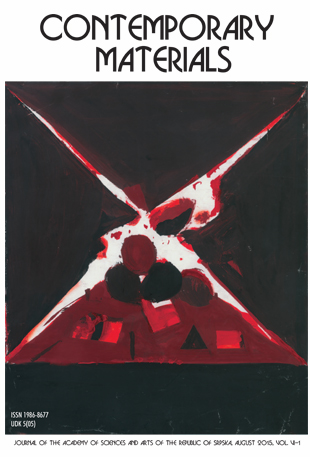EFFECT OF MIXING APPROACH ON THE PROPERTIES OF CONCRETE WITH DIFFERENT AGGREGATE TYPES
DOI:
https://doi.org/10.7251/COMEN2201074SAbstract
The subject of the experimental tests presented in the paper is the influence of the mixing method on the physical and mechanical properties of fine-grained concrete with the nominally largest aggregate grain of 8 mm. Concretes with three different aggregate compositions (river, crushed and mixture with coarse recycled aggregate) were mixed using the usual approach, and then two-stage mixing approach (TSMA). Slump and flow, density and temperature were tested on fresh concrete. The compressive strength, flexural, splitting tensile strength, density, ultrasonic pulse velocity, and water absorption was recorded on hardened concrete. Concretes prepared using recycled aggregate, according to all the mentioned tests, can be used as an adequate replacement for concretes prepared using river or crushed aggregate, while the two-phase approach had the greatest effect on the increase of the splitting tensile strength.
